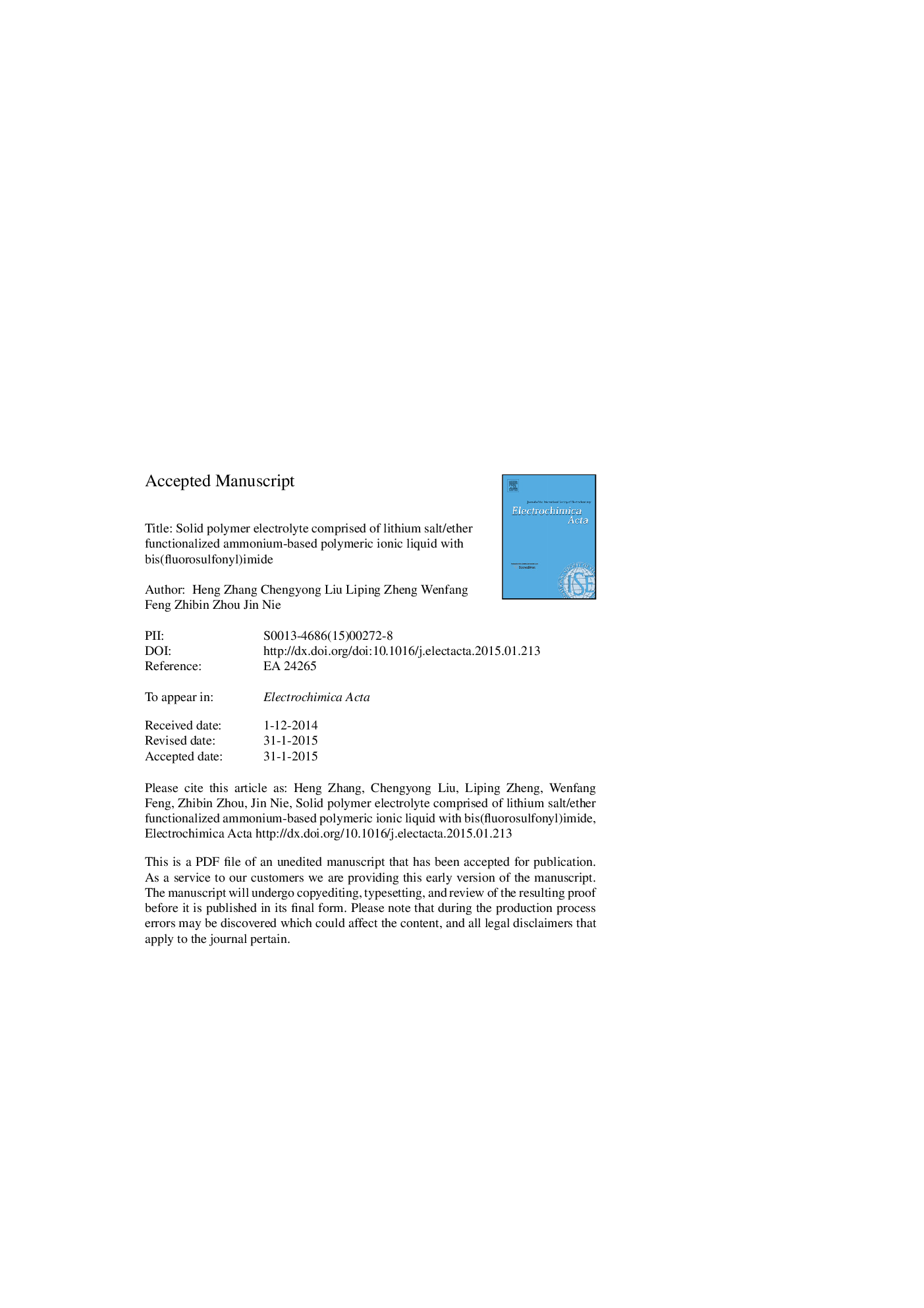| Article ID | Journal | Published Year | Pages | File Type |
|---|---|---|---|---|
| 6612076 | Electrochimica Acta | 2015 | 31 Pages |
Abstract
New solid polymer electrolytes (SPEs) comprised of lithium bis(fluorosulfonyl) imide (Li[N(SO2F)2], LiFSI) and polymeric ionic liquid (i.e., poly[N,N-dimethyl-N-[2-(methacryloyloxy) ethyl]-N-[2-(2-methoxyethoxy) ethyl]ammonium] bis(fluorosulfonyl) imide, P[C5O2NMA,11]FSI) have been prepared and characterized. For comparison, the corresponding SPEs, lithium bis(trifluoromethylsulfonyl) imide (Li[N(SO2CF3)2], LiTFSI)/poly[N,N-dimethyl-N-[2-(methacryloyloxy) ethyl]-N-[2-(2-methoxyethoxy) ethyl]ammonium] bis(trifluoromethylsulfonyl) imide (P[C5O2NMA,11]TFSI), are also prepared and characterized. Their physicochemical properties have been investigated in terms of phase transition behavior, ionic conductivity, lithium-ion transference number (tLi+), electrochemical stability, and with particular attention to the interfacial behavior between lithium electrode and SPEs. It has been demonstrated that the ionic conductivities of LiFSI/P[C5O2NMA,11]FSI electrolyte are higher than those of the corresponding TFSI-based one. The interface resistances of Li symmetric cell (Li metal | polymer electrolytes | Li metal) using LiFSI/P[C5O2NMA,11]FSI electrolyte are much lower than those using LiTFSI/P[C5O2NMA,11]TFSI electrolyte. These outstanding properties of the FSI-based electrolyte make it attractive as SPEs for Li battery.
Related Topics
Physical Sciences and Engineering
Chemical Engineering
Chemical Engineering (General)
Authors
Heng Zhang, Chengyong Liu, Liping Zheng, Wenfang Feng, Zhibin Zhou, Jin Nie,
